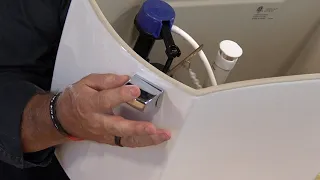Ever had a small plumbing issue blow up into a huge mess? Sometimes rolling up your sleeves can save you money, but other times you’ll want to bring in a pro. After more than 40 years in the trade, here’s how I’d split the work between do-it-yourself tasks and the ones best left to licensed plumbers.
Easy DIY Fixes
Hose Bib Repairs
If you’ve got a leaking outdoor spigot (hose bib), it’s often as simple as unscrewing the old one and attaching a new one. Depending on the style, you can also remove the bonnet and replace a washer. Just shut off the water supply before starting.
Angle Stops
Angle stops (those valves under your sink or toilet) can be replaced or repaired with basic tools. Once the water is off, you may need just a new stem or washer. Check for leaks once you’re done.
Running Toilets
A running toilet can waste gallons of water every day. In most cases, it’s a bad flapper, fill valve, or chain. These parts are inexpensive and easy to replace. Follow a trusted tutorial, and you’ll save a bundle on your water bill.
Tightening Leaks in Pipes
A slow drip under the sink might be nothing more than a loose nut. If you’re comfortable crawling under there and snugging it up with a wrench, you can often solve the problem. Always test for leaks after you’re finished.
Water Heater Install (Advanced DIY)
If you’re very handy and not afraid to pull permits, you might tackle a traditional tank water heater replacement. You’ll need to shut off all utilities, drain and remove the old unit, and install the new one to code. If this feels out of your comfort zone, call a plumber.
Whole-House Water Filtration
Installing a filtration system on the main incoming line can be done if you’re confident cutting and joining pipes. Plan carefully where you’ll place the filter, and consider leaving enough slack for maintenance. Some systems may require additional valves or a bypass.
Times to Call a Pro
Gas Lines
In Texas (and many other states), gas lines fall under a plumber’s scope. Gas leaks can be deadly. If you suspect any problem with a gas line or need a new connection, don’t risk it—hire a licensed professional.
Slab Leak Repairs
Finding and fixing leaks under a concrete slab is a specialized skill. You may need advanced leak detection equipment, and your home could have post-tension cables in the foundation. Leave this to plumbers who have the tools and training to do it safely.
Major Remodels (Bathroom or Kitchen)
Moving a toilet or sink to the other side of the room requires more than just new pipes—it calls for code knowledge, venting expertise, and possibly removing walls or flooring. If you’re expanding or relocating major fixtures, bring in a pro to ensure everything meets code.
Replacing Long Runs of Water or Sewer Lines
When you’re dealing with substantial lengths—often over five feet—of pipe replacements or repairs, you’ll want a plumber who can handle digging, code compliance, and permanent solutions. Improper slope or venting can lead to ongoing problems.
Permits and Code Compliance
If you’re unsure whether a permit is required, call your local building department. Tell them exactly what you plan to do:
• Replacing a water heater
• Relocating a toilet
• Adding or moving a fixture
Local rules can vary, but the goal is the same: ensuring work is safe and code-compliant. Plumbers can pull these permits for you, and you’ll usually need an inspection once the work is done.
Final Thoughts
Small repairs like fixing a running toilet or tightening a drip are often in the comfort zone of a DIY enthusiast. But major tasks—especially anything involving gas lines or slab leaks—require a licensed plumber. When in doubt, always check local rules, and don’t be shy about calling in a pro. It could save you big money and bigger headaches down the road.



